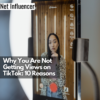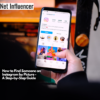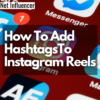Platform
Consolidation, Global Expansion, And More: The Creator Economy’s M&A Landscape In 2024
With a global market value of $156.4 billion, the creator economy and its impact cannot be overstated. This sector comprises a rather dynamic ecosystem of media entities, influencer and talent management agencies, and software platforms.
The market saw a total of 65 merger and acquisition (M&A) deals completed in 2024, according to a report by boutique M&A advisory firm Quartermast Advisors.
Among the largest deals are French mobile app and games publisher Voodoo’s acquisition of BeReal for $520 million and multinational advertising agency Publicis’ acquisition of Influential for $500 million.
BeReal is a fast-emerging France-headquartered social media platform founded in 2020. Meanwhile, Influential is considered the largest influencer marketing platform globally. It has a network of 3.5 million creators and leverages proprietary artificial intelligence (AI).
A snapshot of a dynamic market
The 65 M&A deals in 2024 were a slight drop compared to 2023’s 69 deals. In an interview with Net Influencer, James Creech, Founder of Quartermast Advisors, says that this slowdown is partly because of macroeconomic factors. He is optimistic that M&A figures will pick up again in 2025.
“We expect to see more M&A activity this year, as we enter a lower interest rate environment and get past the chaos and uncertainty of an election year. Given the changing political climate and increased access to capital, we expect transaction activity to pick up over the next 12 months,” James tells Net Influencer.
North America led the M&A activity in 2024, accounting for 61.5% of the transactions. Europe followed with 23.1%.
In terms of acquisitions, software companies (23.1%) were the most targeted, followed by influencer agencies (20%), media properties (16.9%), and talent management firms (13.8%). These figures show that last year, many creator economy acquisitions involved service businesses (including influencer agencies and talent management firms).
“There’s a large number of service businesses in the creator economy, especially agencies and management companies, so the sheer volume naturally lends itself to a meaningful percentage of overall transaction volume,” James explains, adding that capability expansion and economies of scale are also major drivers behind this trend.
“Traditional agency groups and talent representation firms are looking to expand their capabilities and capitalize on the growth opportunities in the creator economy, so there’s strong buyer interest. Additionally, some buyers have a specific consolidation mandate, so they’ll integrate a number of service businesses to realize economies of scale,” he continues.
This year, Quartermast forecasts that this trend of agency and talent management consolidation will continue.
Talent market consolidation, content creation, and commerce
Last year’s nuanced M&A landscape, according to Quartermast, was characterized by “strategic consolidation, technological innovation, and global expansion.”
Among the key trends that shaped the market is talent market consolidation, with nine talent representation firms getting acquired. This is equivalent to 13.8% of 2024’s deal volume. One of the most prominent transactions was Night Media’s acquisition of Bottle Rocket Management, which represents 40 high-profile creators across the tech, gaming, and fitness industries. Both companies were founded in 2015.
Other notable deals include Wasserman’s acquisition of Long Haul Management and Gersh’s purchase of A3 Digital and YouFirst.
Another defining trend is the convergence of content creation and commerce, as evidenced by deals like Hershey’s acquisition of creator Maxx Chewning’s candy brand Sour Strips. The deal was estimated to be worth over $100 million. Meanwhile, live shopping platform NTWRK acquired Complex for $109M. The youth media brand has since rebranded to Complex NTWRK.
Tech enhancements and global expansion
In 2024, acquisitions of AI-enabled creator tools also increased. This trend shows how more companies are increasingly leveraging advanced technology for various use cases, such as monetization, content optimization, and audience engagement.
In January last year, Lectra, a French firm with a presence in the fashion, automotive, and furniture markets, acquired the U.S.-based Launchmetrics. Launchmetrics, established in 2015, has a cloud-based SaaS platform designed to help fashion, lifestyle, and beauty professionals track brand performance.
Global expansion was also a key trend, with one-third of M&A deals involving international buyers or sellers.
In 2025, James expects the U.S. to continue dominating the market. Nonetheless, he also foresees increasing activity in Europe, Middle East, and Africa (EMEA), Asia-Pacific (APAC), and Middle East and North Africa (MENA).
“The creator economy is a global phenomenon, but the U.S. continues to lead in terms of new startups and funding, so it will likely remain the primary market for the foreseeable future. Interestingly, Europe was actually the no. 1 region for influencer marketing M&A transactions last year, with North America and Asia not far behind,” Quartermast Advisors’ founder says.
Healthy valuations
In terms of valuations, media businesses prove to be the most valuable in 2024, with a valuation range that is 8 to 12.7 times the value of their EBITDA (earnings before interest, taxes, depreciation, and amortization). This is followed by agency businesses (4.8x to 9.1x EBITDA) and talent management businesses (4x to 8x EBITDA). Software companies, typically valued based on ARR or annual recurring revenue, boast a valuation range of 3.5x to 9.7x ARR.
Commenting on this trend, James notes, “We’re certainly seeing healthy valuations for creator economy companies. This industry is growing rapidly, which offers significant upside for creator economy companies’ future earning potential.”
“It was great to see so many nine-figure acquisitions in 2024, and we expect even more this year. Those types of outcomes validate the opportunity in this space and encourage more investment and innovation in the creator economy,” he adds.
As predicted by Quartermast, the market could see its first billion-dollar acquisition soon. And several potential targets are positioned to hit this milestone in the next one or two years. During the interview, James cited influencer marketing software firms (CreatorIQ, Grin, LTK) and creator tools and services (Patreon, Spotter, Lightricks, Kajabi). He also mentioned media businesses (Dude Perfect, Dhar Mann, LADbible) and music companies (Create Music Group, Epidemic Sound, Artlist).
TikTok, a social media platform expected to reach 2.14 billion users in 2025, is also a strong contender “if the U.S. ban is upheld,” according to James.
Active, fast-evolving, and maturing
In 2024, the world witnessed how fast-evolving and active the creator economy M&A landscape is. The transaction volumes were consistent in the past years, and the volume is expected to increase in the next one to two years, thanks to “a likely more relaxed regulatory climate and potentially lower interest rate environment.”
With an impact that stretches across various industries, the creator economy is poised to thrive further, growing at a compound annual growth rate (CAGR) of 22.5%. By 2030, this market could surpass $258 billion.
This development is happening at a time of continued growth for the influencer marketing platform in terms of market size. According to a report by Technavio, the market could grow by $52.23 billion from 2024-2028, reflecting a CAGR of 32.07%. This growth will be driven by increasing partnerships and M&As.
But while the influencer marketing platform market is rapidly rising, challenges persist. These range from authenticity issues, aligning target audiences, and measuring ROI to maintaining transparency and keeping up with trends. These issues all the more highlight the need for strategic approaches and advanced tools.
Now, as the influencer market and the broader creator economy continue to mature, companies with proven revenue models and clear paths to profitability will be the most attractive to buyers. In the coming years, this industry will also see more structured deals, incorporating performance-based earnouts, demonstrating a heightened focus on accountability and long-term value creation.
In such a dynamic space, Quartermast concluded in its report that one thing is clear: “The long-term winners will be those with profitable, sustainable business models.”





















